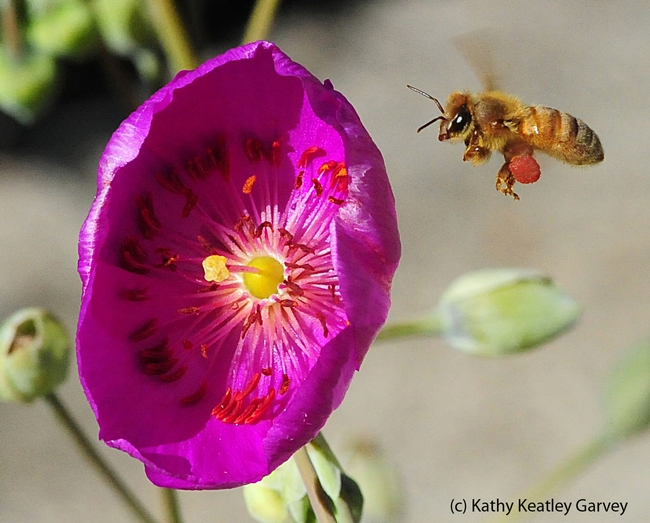"Where do bees get red pollen?" we were asked. "We've seen bees packing blood-red pollen at the entrance to a hive."
Well, one flower that yields red pollen is rock purslane (Calandrinia grandiflora). It's a drought-tolerant perennial, a succulent.
Interestingly enough, the blossom itself is neon pink or magenta, the kind that cyclists wear to be seen.
Rock purslane attracts its share of honey bees, bumble bees, carpenter bees, leafcutter bees and sweat bees. Other pollinators, including flies, land on it, too. It's a good plant to brighten your garden and to observe the wide variety of floral visitors.
Other flowers that yield red pollen include henbit (Lamium amplexicaule) and horse chestnut (Aesulus hippocastanum).
Bees collect pollen as a protein source to rear their brood.
"The importance of pollen to the health and vigor of the honey bee colony cannot be overstated," writes Norman Gary, emeritus professor of entomology, in his book, Honey Bee Hobbyist, The Care and Keeping of Bees. "Honey satisfies the bees' carbohydrate requirement, while all of the other nutrients--minerals, proteins, vitamins and fatty substances--are derived from pollen."
"Nurse bees consume large amounts of pollen, converting it into nutritious secretions that are fed to developing larvae," Gary points out. "During an entire year, a typical bee colony gathers an consumes about 77 pounds of pollen."
And some of it is red!
Attached Images:

